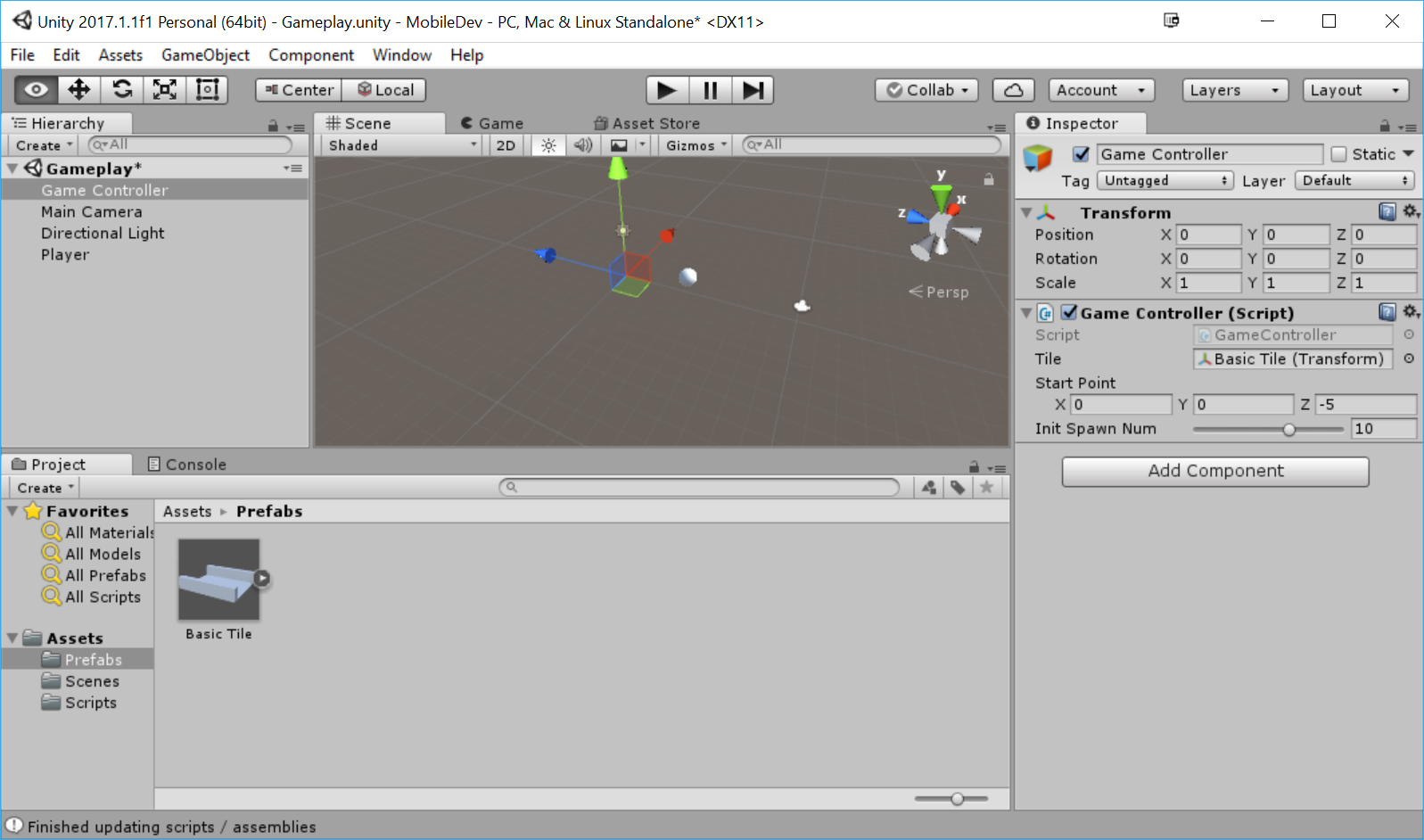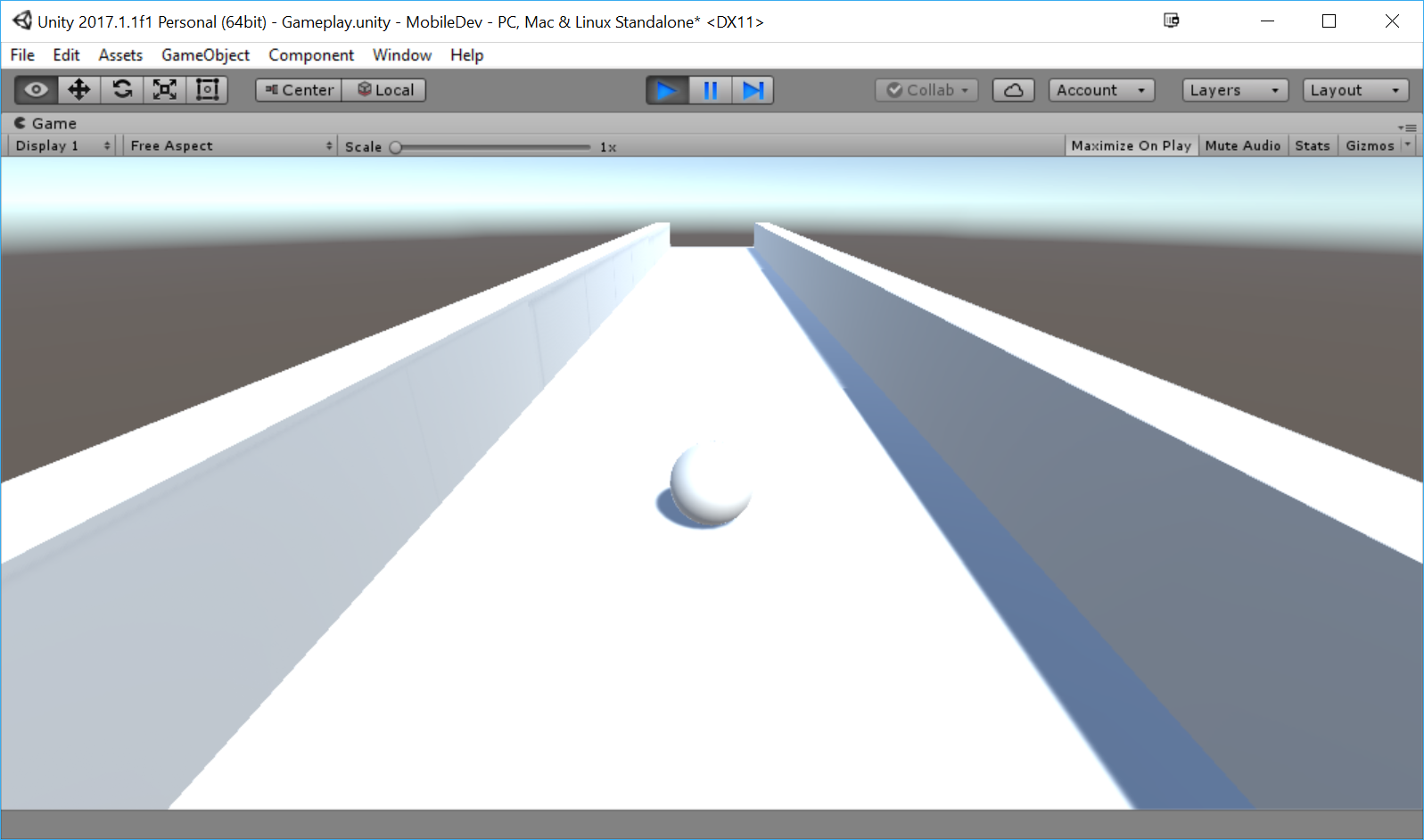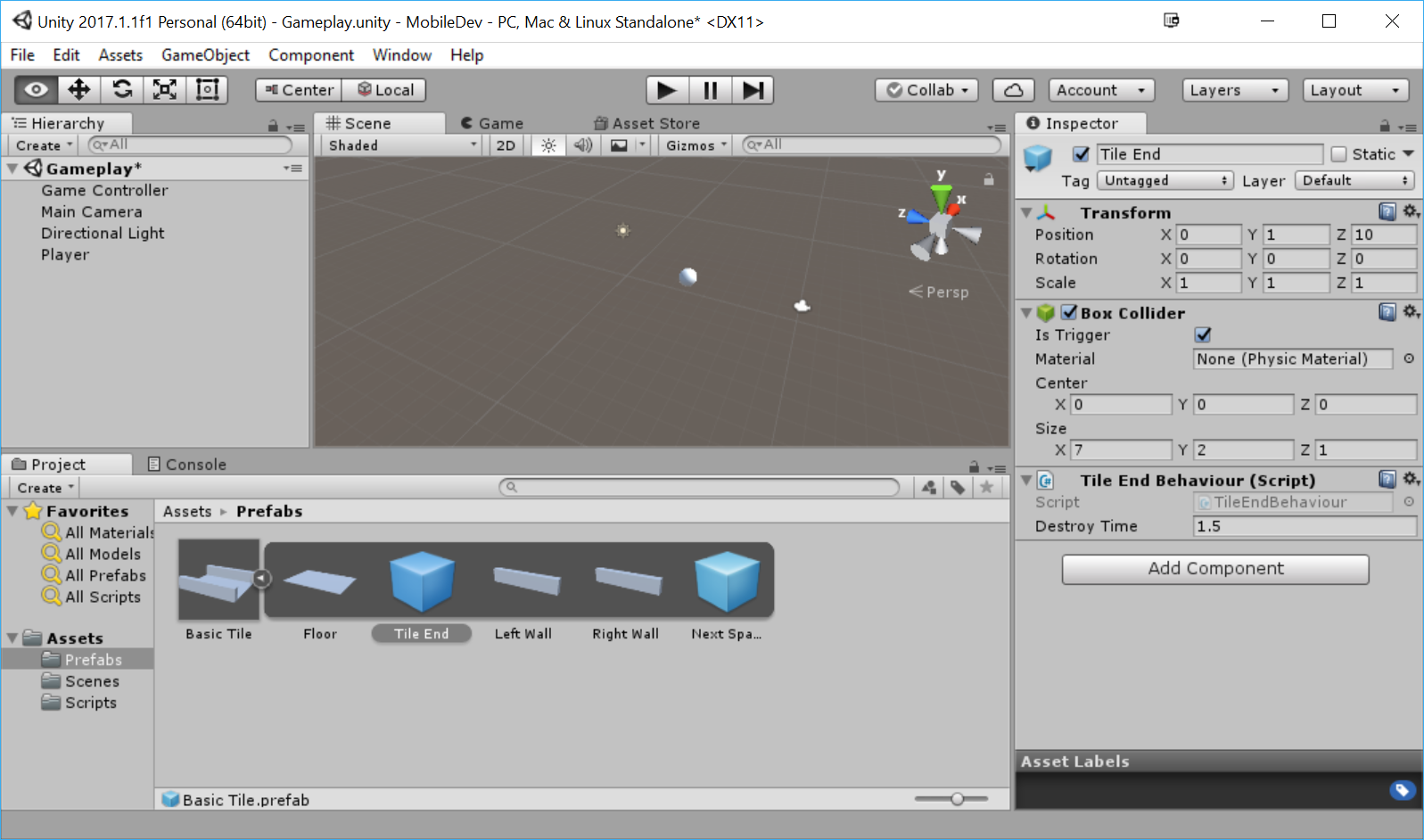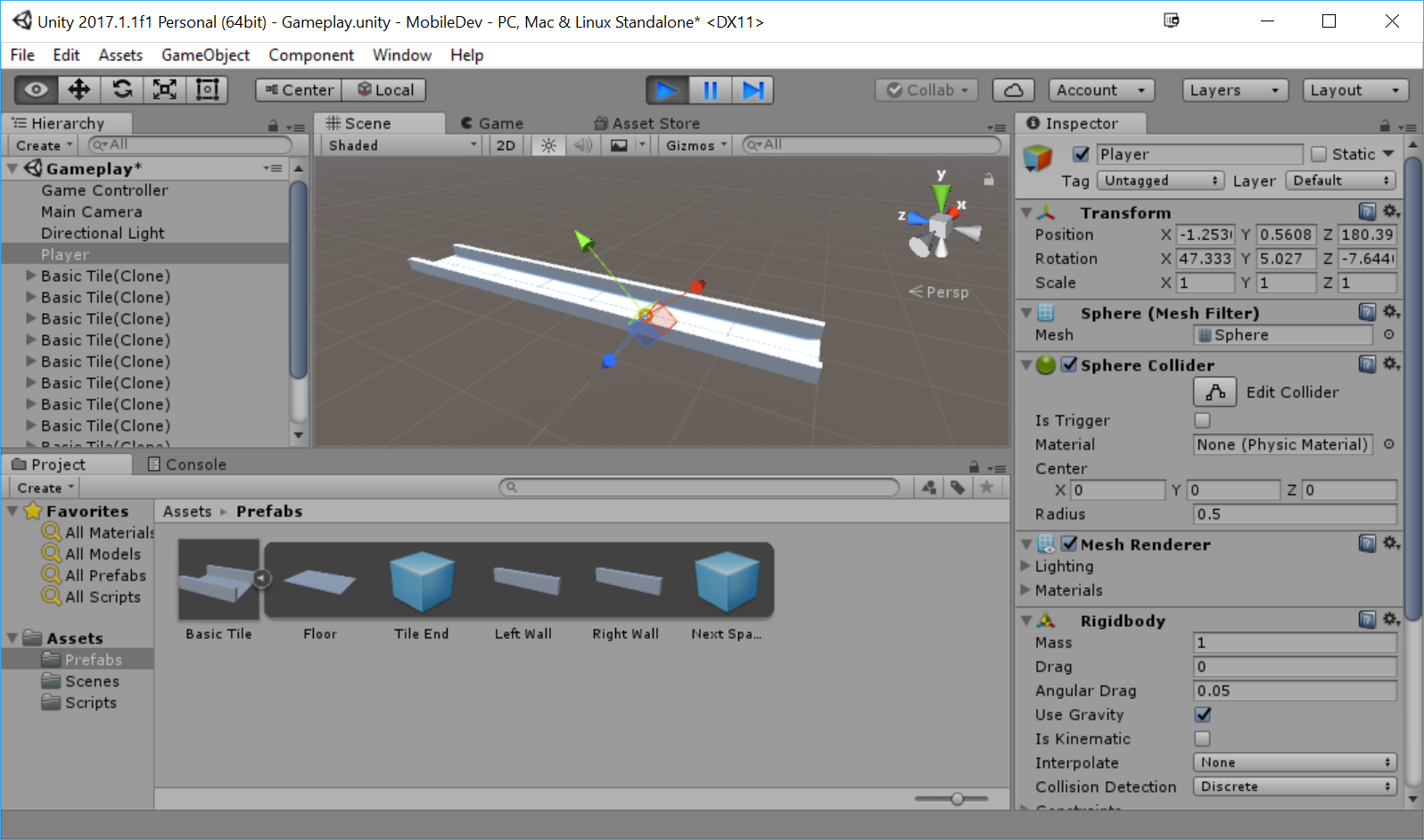Now that we have a foundation, let's now make it so that we can continue running instead of stopping after a short time:
- To start off with, we have our prefab, so we can delete the original Basic Tile in the Hierarchy window by selecting it and then pressing the Delete key.
- We need to have a place to create all of these tiles and potentially manage information for the game, such as the player's score. In Unity, this is typically referred to as a GameController. From the Project window, go to the Scripts folder and create a new C# script called GameController.
- Open the script in your IDE, and use the following code:
using UnityEngine;
/// <summary>
/// Controls the main gameplay
/// </summary>
public class GameController : MonoBehaviour
{
[Tooltip("A reference to the tile we want to spawn")]
public Transform tile;
[Tooltip("Where the first tile should be placed at")]
public Vector3 startPoint = new Vector3(0, 0, -5);
[Tooltip("How many tiles should we create in advance")]
[Range(1, 15)]
public int initSpawnNum = 10;
/// <summary>
/// Where the next tile should be spawned at.
/// </summary>
private Vector3 nextTileLocation;
/// <summary>
/// How should the next tile be rotated?
/// </summary>
private Quaternion nextTileRotation;
/// <summary>
/// Used for initialization
/// </summary>
void Start()
{
// Set our starting point
nextTileLocation = startPoint;
nextTileRotation = Quaternion.identity;
for (int i = 0; i < initSpawnNum; ++i)
{
SpawnNextTile();
}
}
/// <summary>
/// Will spawn a tile at a certain location and setup the next position
/// </summary>
public void SpawnNextTile()
{
var newTile = Instantiate(tile, nextTileLocation,
nextTileRotation);
// Figure out where and at what rotation we should spawn
// the next item
var nextTile = newTile.Find("Next Spawn Point");
nextTileLocation = nextTile.position;
nextTileRotation = nextTile.rotation;
}
}
This script will spawn a number of tiles, one after another, based on the tile and initSpawnNum properties.
- Save your script and dive back into Unity. From there, create a new Empty game object and name it Game Controller. Drag and drop it to the top of the Hierarchy window. For clarity's sake, go ahead and reset the position if you want to. Then, attach the Game Controller script to the object and then set the Tile property by dragging and dropping the Basic Tile prefab from the Project window into the Tile slot:

- Save your scene and run the project:

Great, but now we will need to create new objects after these, but we don't want to spawn a crazy number of these at once. It's better that once we reach the end of a tile, we create a new tile and remove it. We'll work on optimizing this more later, but that way we always have around the same number of tiles in the game at one time.
- Go into the Project window and create a new script called TileEndBehaviour, using the following code:
using UnityEngine;
/// <summary>
/// Handles spawning a new tile and destroying this one
/// upon the player reaching the end
/// </summary>
public class TileEndBehaviour : MonoBehaviour
{
[Tooltip("How much time to wait before destroying " +
"the tile after reaching the end")]
public float destroyTime = 1.5f;
void OnTriggerEnter(Collider col)
{
// First check if we collided with the player
if (col.gameObject.GetComponent<PlayerBehaviour>())
{
// If we did, spawn a new tile
GameObject.FindObjectOfType<GameController>().SpawnNextTile();
// And destroy this entire tile after a short delay
Destroy(transform.parent.gameObject, destroyTime);
}
}
}
- Now, to assign it to the prefab, we can go to the Project window and then go into the Prefabs folder. From there, click on the arrow beside the Basic Tile to open up its objects and then add a Tile End Behaviour component to the Tile End object:

- Save your scene and play.
You'll note now that as the player continues to move, new tiles will spawn as you continue; if you switch to the Scene tab while playing, you'll see that as the ball passes the tiles they will destroy themselves:




